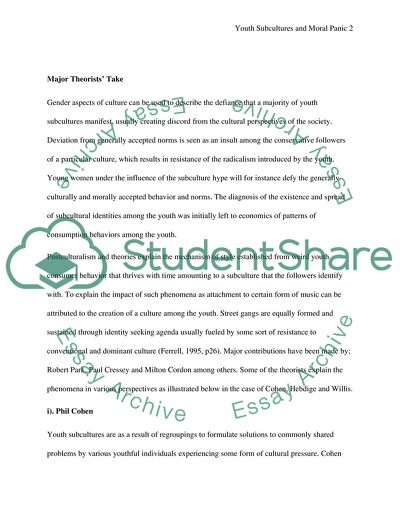Cite this document
(“In the growing body of research around girls and street/gang culture, Essay”, n.d.)
In the growing body of research around girls and street/gang culture, Essay. Retrieved from https://studentshare.org/journalism-communication/1583286-in-the-growing-body-of-research-around-girls-and-streetgang-culture-how-have-theorists-attempted-to-make-sense-of-the-moraln-panic-engendered-by-young-womens-contestation-of-culturally-dominant-gender-behavioural-norms
In the growing body of research around girls and street/gang culture, Essay. Retrieved from https://studentshare.org/journalism-communication/1583286-in-the-growing-body-of-research-around-girls-and-streetgang-culture-how-have-theorists-attempted-to-make-sense-of-the-moraln-panic-engendered-by-young-womens-contestation-of-culturally-dominant-gender-behavioural-norms
(In the Growing Body of Research Around Girls and street/Gang Culture, Essay)
In the Growing Body of Research Around Girls and street/Gang Culture, Essay. https://studentshare.org/journalism-communication/1583286-in-the-growing-body-of-research-around-girls-and-streetgang-culture-how-have-theorists-attempted-to-make-sense-of-the-moraln-panic-engendered-by-young-womens-contestation-of-culturally-dominant-gender-behavioural-norms.
In the Growing Body of Research Around Girls and street/Gang Culture, Essay. https://studentshare.org/journalism-communication/1583286-in-the-growing-body-of-research-around-girls-and-streetgang-culture-how-have-theorists-attempted-to-make-sense-of-the-moraln-panic-engendered-by-young-womens-contestation-of-culturally-dominant-gender-behavioural-norms.
“In the Growing Body of Research Around Girls and street/Gang Culture, Essay”, n.d. https://studentshare.org/journalism-communication/1583286-in-the-growing-body-of-research-around-girls-and-streetgang-culture-how-have-theorists-attempted-to-make-sense-of-the-moraln-panic-engendered-by-young-womens-contestation-of-culturally-dominant-gender-behavioural-norms.


